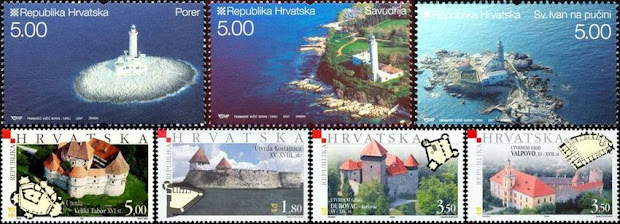Train travelers in the Balkans are used to waiting at borders. Officials check your passport and ask: "Nešto za prijaviti?". Something to declare? No one ever declares anything, last of all the Croatian women who smuggle cheap textile from Italy to Zagreb.
When Slovenia joined the Schengen area I expected the endless waiting to be over. But no. Villa Opicina, at the Slovenian-Italian border is one of those notorious places where you stare out of the window and think: "Are we really in the EU?" After an hour or so the train finally starts moving to Venice.
 I had to think of this as I read an article in Die Tageszeitung, published on Presseurope. Presseurope translates articles from several European newspapers into the main EU languages. Something like the International Herald Tribune, but than online and very limited in scope.
I had to think of this as I read an article in Die Tageszeitung, published on Presseurope. Presseurope translates articles from several European newspapers into the main EU languages. Something like the International Herald Tribune, but than online and very limited in scope.
The fall of the Iron Curtain should have united two towns, but Italian Gorizia and Slovenia's Nova Gorica continue to snub one another with great distinction. While Nova enjoys an economic boom, old Gorizia tearily remembers the rare old times.
The enormous car park is almost completely deserted. It has enough space for hundreds of cars, but only a few stray vehicles are parked under the pale light of the street lamps. And save a handful of guests at the nearby pizzeria, there isn’t a soul in sight.
A cab? The waiter frowns as though he’d been asked an utterly absurd question. “After eight you can’t get a taxi anywhere in Gorizia.” Gorizia has called it a day...
We'll consider the phrase Iron Curtain a slip of the tongue.
When Slovenia joined the Schengen area I expected the endless waiting to be over. But no. Villa Opicina, at the Slovenian-Italian border is one of those notorious places where you stare out of the window and think: "Are we really in the EU?" After an hour or so the train finally starts moving to Venice.
 I had to think of this as I read an article in Die Tageszeitung, published on Presseurope. Presseurope translates articles from several European newspapers into the main EU languages. Something like the International Herald Tribune, but than online and very limited in scope.
I had to think of this as I read an article in Die Tageszeitung, published on Presseurope. Presseurope translates articles from several European newspapers into the main EU languages. Something like the International Herald Tribune, but than online and very limited in scope.The fall of the Iron Curtain should have united two towns, but Italian Gorizia and Slovenia's Nova Gorica continue to snub one another with great distinction. While Nova enjoys an economic boom, old Gorizia tearily remembers the rare old times.
The enormous car park is almost completely deserted. It has enough space for hundreds of cars, but only a few stray vehicles are parked under the pale light of the street lamps. And save a handful of guests at the nearby pizzeria, there isn’t a soul in sight.
A cab? The waiter frowns as though he’d been asked an utterly absurd question. “After eight you can’t get a taxi anywhere in Gorizia.” Gorizia has called it a day...
We'll consider the phrase Iron Curtain a slip of the tongue.





0 reacties:
Post a Comment